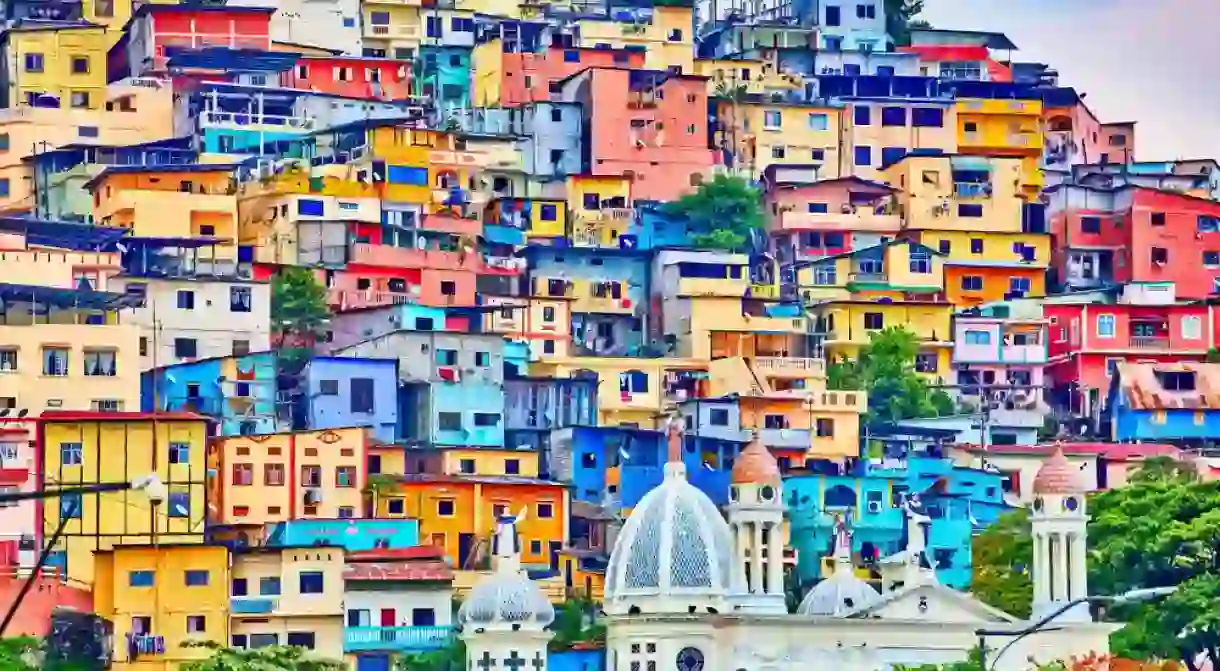The Top Things to See and Do in Guayaquil, Ecuador

Guayaquil is not only the largest city in Ecuador, but it is also where the majority of international companies come to do business. It has pockets of modernity and quaint stories of old-time smugglers just trying to make a living in the big city. The city is also home to turn-of-the-century buildings in the neoclassical style, green spaces shared with heat-loving land iguanas, and plazas where locals sit and enjoy the early evening drop in temperatures.
Malecón 2000
Botanical Garden, Park

Iguana Park
Park

Officially called Parque Seminario, this small green space in the heart of downtown Guayaquil is an attraction for both locals and international visitors. It is home to dozens of land iguanas. They congregate on tree limbs hanging over the path, on the tile bordering the small pond, and sometimes on the park benches themselves. If you want a close-up photo of an iguana, this is the best chance you will ever have.
Catedral Metropolitana de Guayaquil
Cathedral, Church
Reserva Ecológica Manglar Churute
Park
The Manglares Churute Ecologic Reserve protects more than 35,000 hectares of endangered mangrove forests. Areas with mangroves make excellent locations for shrimp farms, and the government of Ecuador is attempting to protect some of the last primary mangrove forests before they all disappear. One of the best ways to explore this local reserve is by canoe or kayak, as many of the narrow waterways are some of the best locations to see shyer species of birds.
Parque Histórico Guayaquil
Museum, Park

Museo Presley Norton
Museum
Of all the museums in Guayaquil, the Presley Norton Museum has the best collections of pre-Columbian artifacts from the Valdivia culture, who once lived along the coast of Ecuador. For archaeology buffs and history lovers, this museum provides insight into a civilization that remains unknown to most visitors from other countries.
Las Peñas
Architectural Landmark, Historical Landmark

The colorfully painted homes of the Las Peñas neighborhood are part of the daytime draw to this cute area. However, in the evenings, the location transforms into a vibrant bar scene. Local addresses are marked by the number on the step closest to your place of business. Look for Escalera 1 if you want to start at the beginning and make the entire trip up to Escalera 444. The best time of day to photograph the neighborhood is in the cool early morning or during the golden hour and sunset, but be careful with expensive equipment; pickpockets and thieves frequent this area.
Cerro Santa Ana
Historical Landmark, Architectural Landmark
At the top of the walkway through the neighborhood of Las Peñas, at Step 444, lies the hilltop of Santa Ana. While the walk is half the fun, the views are even better, with those of Río Guayas, the city of Guayaquil, and the quaint neighborhood of Las Peñas greeting visitors. It is also possible to visit both the famous lighthouse and a small church.
Isla Santay
Bosque Protector Cerro Blanco
Forest, Hiking Trail, Natural Feature













